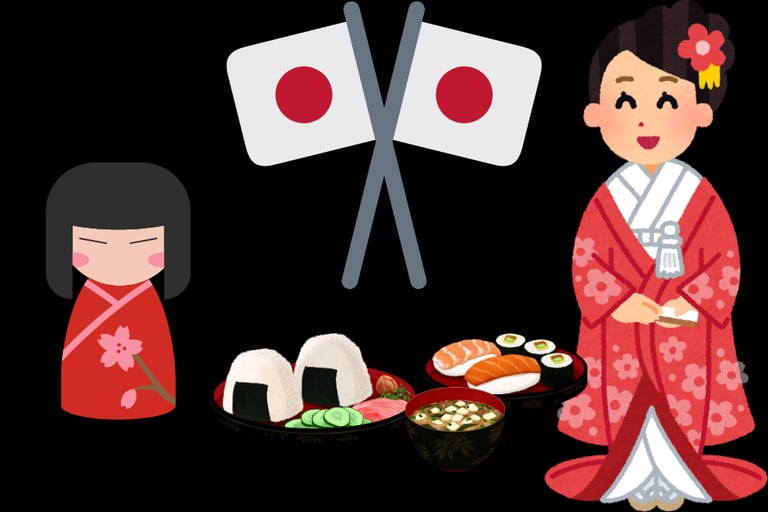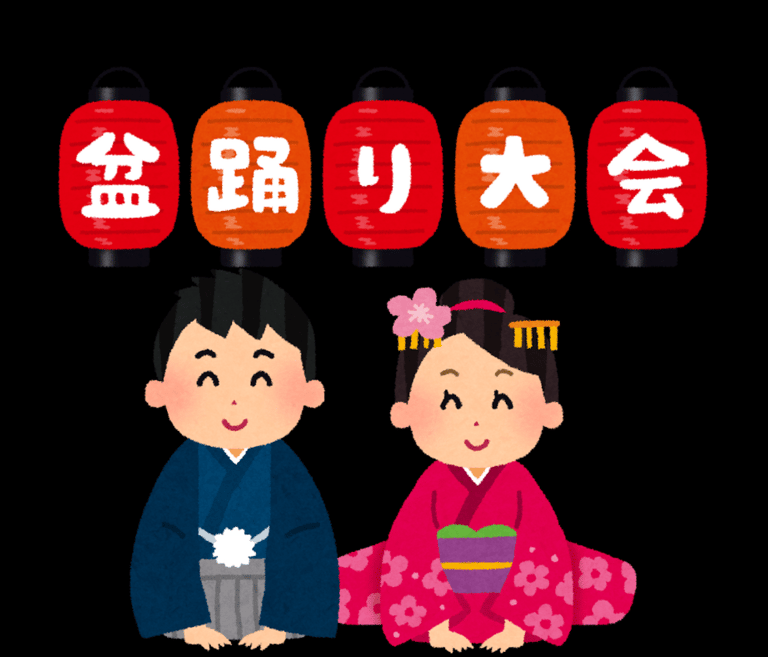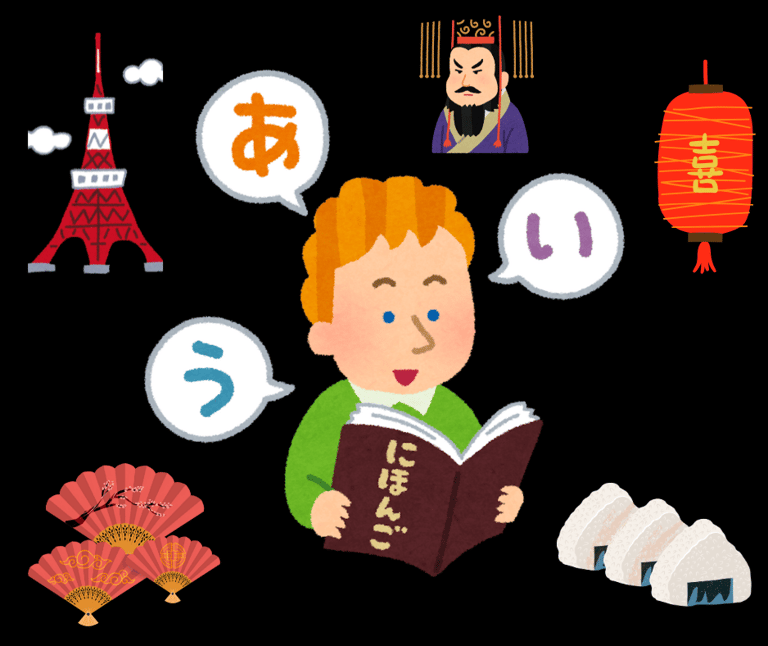JAPANESE LANGUAGE
Learning Japanese is like stepping into a beautifully intricate puzzle—where every piece, from Hiragana to Kanji, clicks into place to reveal a vibrant tapestry of language and culture. The JLPT levels (N5 to N1) chart your path from simple greetings to meaningful conversations about anime, technology, or the elegance of a tea ceremony. With each level, you’ll uncover deeper layers of understanding, making this journey not just fascinating, but truly rewarding.
ROADMAP TO LEARN JAPANESE LANGUAGE
JLPT N5
🧭 What You Learn in JLPT N5 (Beginner Level)
JLPT N5 = Foundation Level
This level proves that you can understand some basic Japanese, especially when it’s slow, clear, and simple. It’s like unlocking the ABC’s of Japanese life and conversation — small steps, big confidence!
📚 1. Vocabulary – Around 400–500 Words
At N5, you’ll learn everyday vocabulary used in:
Self-introduction (your name, age, nationality, hobbies)
Family and friends (mother, father, siblings, etc.)
Numbers, days, time (how to say the date, tell time, count)
Basic daily routines (eat, sleep, go, come, do)
Locations and places (school, home, station, park)
Weather and nature (sunny, rainy, hot, cold, tree, mountain)
Common objects (pen, book, phone, bag)
Basic adjectives (big, small, hot, cold, pretty, expensive)
Polite expressions (hello, thank you, sorry, excuse me)
This gives you just enough words to get by in Japan, ask simple questions, and start understanding things around you.
🧱 2. Grammar – Essential Patterns
N5 introduces the core grammar patterns that Japanese is built on. You’ll learn how to:
Form simple sentences (I am a student. This is a book.)
Use the "desu" and "masu" forms (polite form of speaking)
Make yes/no and WH- questions (What is that? Where is the toilet?)
Talk about time, days, and frequency (every day, sometimes, never)
Use particles like:
wa (topic marker),
ga (subject marker),
o (object marker),
ni, de, e (time/place/direction)
Connect adjectives and nouns (This book is interesting. That car is fast.)
Make negatives and past tense (I didn’t eat. I went to school.)
Give basic commands and invitations (Let’s go! Please wait.)
It’s like learning how to build Lego sentences — solid and simple!
🈷️ 3. Kanji – Around 150-200 Characters
You’ll learn the most essential Kanji, including:
Numbers (1 to 10, 100, 1000)
Days and months
Basic nature words (sun, moon, water, tree)
Common verbs and nouns (go, see, eat, mouth, hand)
Everyday items and places (book, school, mountain, river)
You’ll also master Hiragana and Katakana, the two basic scripts.
Reading menus, signs, or a child’s book becomes totally possible!
👂 4. Listening – Everyday Language
You’ll be able to understand:
Slow and clear sentences from native speakers
People introducing themselves
Short conversations about school, food, hobbies, or weather
Basic questions and answers (Where are you going? What time is it?)
Simple instructions (Please come in. Sit here.)
You’ll train your ears for daily life in Japan — just the basics, but a powerful start.
🗣️ 5. Speaking – Simple and Polite
You’ll practice speaking in situations like:
Saying hello, goodbye, thank you
Introducing yourself and asking for someone’s name
Ordering food or buying something at a shop
Asking and answering simple questions (What is this? Where is the station?)
Talking about your likes, dislikes, and daily routine
You won’t be fluent yet, but you’ll be able to survive and smile through basic conversations.
📖 6. Reading – Easy Sentences
You’ll learn to read:
Short, polite sentences using Hiragana, Katakana, and basic Kanji
Notices, signs, and labels
Simple menus, schedules, or descriptions
Easy emails, texts, or school announcements
The reading won’t be fast, but it will feel exciting and real.
✍️ 7. Writing – The Basics
You’ll be able to write:
Your name and self-introduction
Short diary entries or messages
Sentences about what you do, like, and feel
Proper use of Hiragana, Katakana, and Kanji
Writing is slower at this stage, but it’s all about practice and clarity.
🌍 8. Real-Life Skills – What You Can Do
By the end of N5, you can:
Introduce yourself in Japanese
Ask and answer simple everyday questions
Read signs and menus with basic Kanji
Talk about time, place, people, food, and plans
Get around as a tourist or beginner in Japan
Join a beginner-level Japanese class or language exchange
🎯 Why JLPT N5 Matters
It’s the first step in mastering Japanese
Builds your confidence
Gets you used to Japanese sentence structure
Helps you understand how the language “thinks”
Prepares you for N4, where things get much richer
JLPT N4
🧭 What You Learn in JLPT N4 (Upper Beginner / Pre-Intermediate)
JLPT N4 = Functioning in Simple Japanese
This level shows that you can understand basic Japanese conversations, instructions, and writings, especially around daily life and common situations.
You're no longer just learning words — you're learning how to use them together in real, meaningful ways.
📚 1. Vocabulary – Around 900-1000 Words(Total)
You expand your vocabulary from N5 to include:
Daily life expressions: hospital, bank, bus stop, salary, etc.
Feelings and emotions: happy, sad, angry, tired, worried
School and work life: class, homework, meeting, manager
More verbs and adjectives: arrive, wear, think, explain, important, convenient
Daily actions: clean, fix, call, help, choose
Basic directions and locations: in front, behind, next to, across, intersection
Seasons and activities: autumn, festival, holiday, travel, fireworks
Simple adverbs: usually, often, already, still, just now, slowly, suddenly
You start using words to talk about your world in a deeper way.
🧱 2. Grammar – Making More Complex Sentences
At N4, grammar gets more expressive and allows you to:
Combine multiple ideas in one sentence
(e.g. “I want to go shopping, but I have no money.”)Talk about hopes, intentions, and possibilities
(e.g. “I want to become a teacher.” / “I think it will rain.”)Use casual speech alongside polite forms
Talk about what happened before or after something else
(e.g. “After I eat, I study.” / “Before sleeping, I read.”)Use must, can, should, may, must not
Use grammar for inviting, requesting, suggesting
Use common patterns like:
〜たり〜たりする (doing things like A and B)
〜たほうがいい (you’d better…)
〜すぎる (too much)
〜なければならない (must)
〜かもしれない (might)
〜と思う (I think...)
〜から・ので (because...)
You're building real conversation power — expressing reasons, giving advice, showing preference, and more.
🈷️ 3. Kanji – Around 250-300 Characters(Total N5+N4 = 400 Plus )
You’ll know around additional 250-300 basic Kanji, including:
More verbs and nouns: walk, run, write, sell, drink, learn
Time and quantity words: week, minute, year, how many, enough
Places and transport: train station, airport, hospital, store
Simple adjectives: hot, cold, long, short, near, far
Useful combinations: telephone, student, teacher, homework, entrance
Now you can read menus, instructions, and short stories with ease.
👂 4. Listening – Everyday Conversations
At N4, you can follow:
Slower natural speech in conversations
Common social exchanges at restaurants, stores, schools
People talking about their plans, feelings, and preferences
Instructions for tasks or directions
Short announcements or classroom conversations
Your listening gets more responsive and interactive, not just passive.
🗣️ 5. Speaking – Day-to-Day Flow
You can now handle:
Basic phone conversations
Telling stories about your day or past events
Asking for help or information politely
Making suggestions and expressing preferences
Talking about your routine, hobbies, weekend plans, and more
Explaining problems: “I lost my wallet.” / “I’m not feeling well.”
Using polite or casual tone depending on who you’re talking to
You’re becoming more independent and expressive in conversation!
📖 6. Reading – Short Paragraphs and Dialogue
You’ll be able to read:
Simple narratives and stories
Notes, schedules, announcements
Emails or messages from friends or teachers
Dialogues from manga or textbooks
Simple instructions or advertisements
You’re developing real reading flow — no longer decoding word by word.
✍️ 7. Writing – Expressing Yourself Simply
At N4, you can:
Write short paragraphs about your experiences or thoughts
Send basic messages and emails
Write descriptions, explanations, or requests
Use correct grammar and Kanji in context
You’re now writing with clarity, structure, and real purpose.
🌍 8. Real-Life Skills – What You Can Do
By the end of N4, you can:
Navigate a simple conversation in Japanese with confidence
Communicate at school, work, or in daily errands
Read short articles, signs, and social media posts
Travel in Japan with ease: ask directions, order food, buy tickets
Handle basic daily life in Japanese society as a beginner resident or student
🎯 Why JLPT N4 Is a Big Deal
It proves you’re past the beginner stage
You’re using Japanese to communicate, not just study
You can now learn from Japanese content (manga, songs, simple shows)
It prepares you for N3, where Japanese becomes more natural and complex
JLPT N3
🇯🇵 JLPT N3 – The Bridge to Real Japanese Fluency 🏯
N3 is the halfway point in your Japanese journey — where things go from “I understand some stuff” to “I can survive and even thrive in everyday Japanese!”
You're no longer just learning textbook Japanese — you’re stepping into the language people actually use.
🧠 What You’ll Learn at JLPT N3
📚 Vocabulary – ~2,500 Words(N5+N4+N3)
You’ll expand your word bank to include:
Work, school, travel, and health
Emotions and abstract terms (hope, worry, responsibility)
More verbs, adjectives, and expressions used in daily life and media
Words from public signs, announcements, blog posts, and manga
🧱 Grammar – Real-World Sentence Power
Now you're forming sentences that sound natural and nuanced:
Expressing intentions, requests, guesses, and contrasts
Using conditionals (if/then), comparisons, and polite variations
Understanding and using particles and auxiliary verbs with ease
You’ll speak and write more like a native, less like a phrasebook
🈷️ Kanji – 650–700 Characters
At this level, you’ll recognize:
Kanji from transportation, menus, daily instructions
Compound Kanji words (like "hospital", "company", "homework")
Enough to read manga, short blogs, signs, and basic articles
👂 Listening – Everyday Conversations
You’ll understand:
Regular-speed conversations between native speakers
Public announcements and basic workplace or school dialogues
Main points of short interviews, news, and drama clips
🗣️ Speaking – Confident Interaction
You’ll be able to:
Talk about your past, present, and future
Express thoughts, opinions, and feelings
Ask for and give advice, directions, and suggestions
Participate in everyday conversations naturally
📖 Reading – Beyond Beginner Texts
You’ll comfortably read:
Short essays, descriptions, blog posts
Instructions, flyers, and basic narrative texts
Manga and light novels with some support
✍️ Writing – Clear and Polite
You’ll write:
Personal experiences and opinions
Basic formal messages (like emails or requests)
Daily-life writing — diary entries, summaries, thank-you messages
🌟 What JLPT N3 Can Help You Do
Travel in Japan independently
Handle real-life conversations and casual chats
Enjoy Japanese content (anime, vlogs, manga) with less reliance on subtitles
Work part-time in Japan or study short-term
Feel confident to level up to JLPT N2, where fluency begins
JLPT N2
🇯🇵 JLPT N2 – Deep Dive into the Upper-Intermediate Level of Japanese
N2 is considered an advanced level, and it’s widely accepted in professional and academic settings. Many Japanese universities and companies recognize N2 as the minimum requirement for foreign students and workers.
At this stage, you’re expected to:
Understand natural, fast-paced spoken Japanese
Read newspapers, essays, and formal documents
Express thoughts with clarity, structure, and nuance
Discuss abstract topics and understand indirect meaning
📚 1. Vocabulary – 5,000+ Words
N2 will expand your vocabulary bank to a more professional and academic level. You’ll learn:
Vocabulary used in news reports, research, and formal articles
Terms related to social issues, business, culture, and technology
Complex emotional and descriptive words (e.g., anxiety, efficiency, reputation)
Multiple ways to express a similar idea with varying tone and nuance
Idiomatic expressions and set phrases used by native speakers
This is when you start understanding not just what is said, but how it’s being said — which tone, intent, and context.
🧱 2. Grammar – Structure and Subtlety
N2 grammar makes your Japanese sound much more native and refined. It includes:
a. Advanced Expressions of Reason & Result
Phrases like: “Given that…”, “Considering that…”, “That being the case…”
b. Nuanced Conditionals and Hypotheticals
Dealing with “What if?”, “Even if…”, “Had I known…”
c. Formal and Bookish Patterns
Used in reports, instructions, and academic texts
d. Cause-Effect with Tone
Conveying responsibility, criticism, admiration, and more through phrasing
e. Passive, Causative, and Honorific Usage
Using passive forms naturally in longer sentences
Switching between humble and honorific forms based on the speaker/listener relationship
You’ll learn to say the same idea in different ways, depending on who you're talking to — adding depth and flexibility to your speech and writing.
🈷️ 3. Kanji – Extra 1,000+ Characters
By N2, you’ll be familiar with:
Most Kanji used in daily newspapers, signage, forms, and formal documents
Complex Kanji compounds found in academic texts, business writing, and technical material
Characters with multiple meanings and readings, based on context
Kanji from older Japanese expressions and proverbs
You’ll not only recognize Kanji, but also start to predict meanings of unfamiliar compound words based on the characters they contain.
👂 4. Listening – Fast, Natural, and Varied
At N2, you’ll be able to understand spoken Japanese in a wide variety of situations:
TV news, radio shows, and presentations
Conversations that include slang, idioms, and implied meaning
Instructions and opinions delivered with speed, emotion, or subtle tone
Discussions involving more than two people — picking up changes in topic and perspective
This level strengthens your ability to grasp the speaker’s intent, attitude, and relationship dynamics through tone and phrasing.
🗣️ 5. Speaking – Confident and Versatile
You’ll now be able to:
Give presentations or describe situations in detail
Join discussions on social issues, hobbies, or opinions
Adapt your tone for formal interviews, customer interactions, or debates
Use rhetorical questions, sarcasm, and humor in conversation
Rephrase ideas if someone doesn’t understand — a huge marker of fluency!
People will see you as someone who can not only speak Japanese, but speak it naturally, clearly, and appropriately.
📖 6. Reading – Long Texts and Abstract Content
N2 reading introduces you to the real world of native materials:
Newspapers and magazine articles
Editorials and opinion essays
Formal reports, letters, or academic summaries
Instructions, contracts, and manuals
You’ll understand topic shifts, tone of voice, author’s opinion, and the overall flow of logic in a piece of writing.
✍️ 7. Writing – Structured and Polished
By N2, your writing can handle:
Formal emails, requests, and apologies
Opinion essays on complex topics
Reports or journal entries with solid paragraph structure
Use of linking phrases, formal transitions, and grammatical accuracy
This is where your writing becomes professional, appropriate, and expressive.
🌍 8. What You Can Do with JLPT N2
With N2 under your belt, you can:
✅ Work in Japan in non-technical or general roles
✅ Apply to Japanese universities or graduate schools
✅ Join study abroad programs or exchange programs
✅ Fully enjoy Japanese TV shows, interviews, and news
✅ Read and understand most magazines, websites, blogs, and newspapers
✅ Hold your own in deep conversations with native speakers
🎯 Why JLPT N2 Matters
It proves you’re capable of handling real-life, unfiltered Japanese
It's often required for work visas, school admissions, and professional jobs
It prepares you for JLPT N1, the final and most advanced level
It unlocks deep cultural understanding — jokes, references, proverbs, and more
JLPT N1
🇯🇵 JLPT N1 – Complete Guide to the Advanced Mastery Level of Japanese
🧠 1. What Is JLPT N1?
N1 is the highest level of the Japanese Language Proficiency Test. It proves that you can:
Understand complex Japanese in practically all settings
Read and comprehend academic, legal, or technical texts
Keep up with native-speed conversations, including subtle tones and emotions
Use the language professionally, persuasively, and confidently
In short: if you pass N1, you can live, work, study, or create in Japanese nearly as well as a native speaker.
📚 2. Vocabulary – 7,000+ Words
At N1, your vocabulary includes:
Terms used in academic papers, legal documents, and media editorials
Vocabulary related to politics, economy, law, science, and philosophy
Rare synonyms, proverbs, idiomatic expressions, and figurative language
Expressions of subtle emotion, sarcasm, irony, and nuance
Regional or culturally specific vocabulary
You’ll recognize how different words can alter tone, register, or implication — a key aspect of native fluency.
🧱 3. Grammar – Native-Level Flexibility and Precision
N1 grammar is where everything becomes refined, advanced, and layered.
You’ll master:
a. Highly Formal Constructions
Used in news, business writing, academic reports, and government speech
b. Subtle Grammar for Nuance
Grammar that shows emphasis, indirectness, formality, or bias
Phrases like “not only... but also...”, “it is not that... but rather...”, “as if...”
c. Passive and Honorifics at a High Level
Full mastery of humble and respectful forms, used in real-world service and business situations
d. Grammar with Multiple Interpretations
Learning to understand which nuance is intended based on context, tone, and audience
You won’t just know grammar rules — you’ll know when, how, and why to use them appropriately.
🈷️ 4. Kanji – Extra 2,000+ Characters
You’ll be expected to know nearly all the Jōyō Kanji — the full set used in:
Newspapers, magazines, official documents, and university texts
Advanced compound words used in science, politics, philosophy, and literature
Words where pronunciation and meaning change dramatically depending on context
Your Kanji skills now include:
Understanding Kanji with multiple meanings or readings
Reading without furigana support
Being able to guess meanings of new compound words
👂 5. Listening – Natural, Fast, and High-Level Content
N1 listening tests your ability to understand:
Fast, multi-speaker conversations with varying tones and viewpoints
Lectures, debates, announcements, and abstract discussions
Conversations with sarcasm, indirectness, cultural references
Emotionally charged or subtle exchanges where meaning is implied
You’ll be expected to:
Follow long passages without getting lost
Understand the purpose, attitude, and perspective of each speaker
Catch logical flow, contradictions, and argument structures
🗣️ 6. Speaking – Near-Native Expression
While the JLPT doesn’t directly test speaking, if you're N1-ready, you should be able to:
Speak about complex ideas — from politics to psychology
Explain your thoughts in organized, fluent paragraphs
Use the right level of formality for each situation
Handle negotiations, interviews, or public speaking
Use humor, irony, or persuasive techniques effectively
Native speakers may not even realize Japanese isn’t your first language in many situations.
📖 7. Reading – Full Fluency in Written Japanese
By N1, you can read and understand:
Editorials, essays, and literary works
University-level textbooks and reports
Government documents, regulations, or technical manuals
Long-form fiction and nonfiction with abstract or layered meaning
You’ll be expected to:
Understand overall themes, author's tone, and point of view
Identify implications, nuance, and unspoken assumptions
Read complex material with depth and insight
✍️ 8. Writing – Advanced and Polished
Although not tested on the JLPT, writing skills at this level would include:
Writing research papers, reports, or essays
Drafting formal emails, business letters, and applications
Using advanced linking words, transitions, and tone control
Expressing ideas with depth, subtlety, and sophistication
You can write like a native speaker — just with your own voice and ideas.
🌏 9. What You Can Do in Real Life with JLPT N1
With JLPT N1, you can:
✅ Work in professional fields in Japan — including offices, media, and education
✅ Enroll in Japanese universities or grad programs
✅ Read and understand any news article, novel, or academic paper
✅ Watch films, documentaries, and dramas without subtitles
✅ Handle legal, financial, or bureaucratic paperwork
✅ Interpret, translate, or teach Japanese
✅ Blend naturally into Japanese society and conversations
🎯 Why N1 Is the Gold Standard
It proves full functional fluency
It opens the door to high-level jobs and study opportunities
It’s often required for government, medical, and legal roles
It gives you the tools to engage with Japanese culture and thought at the deepest level
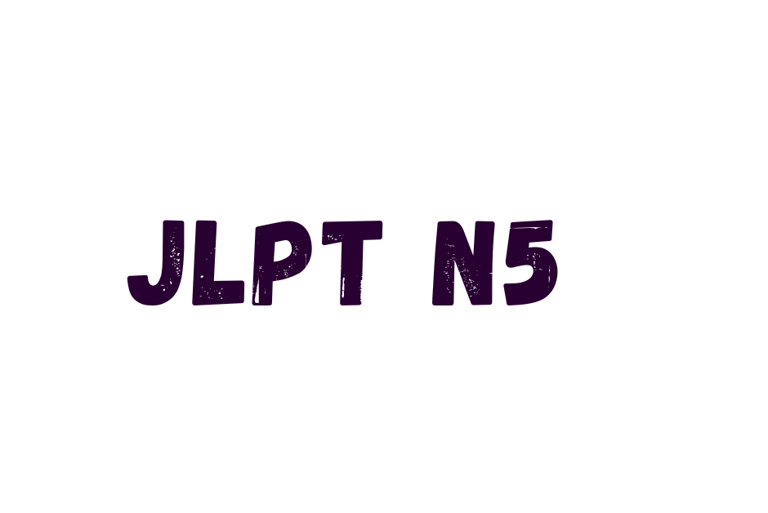

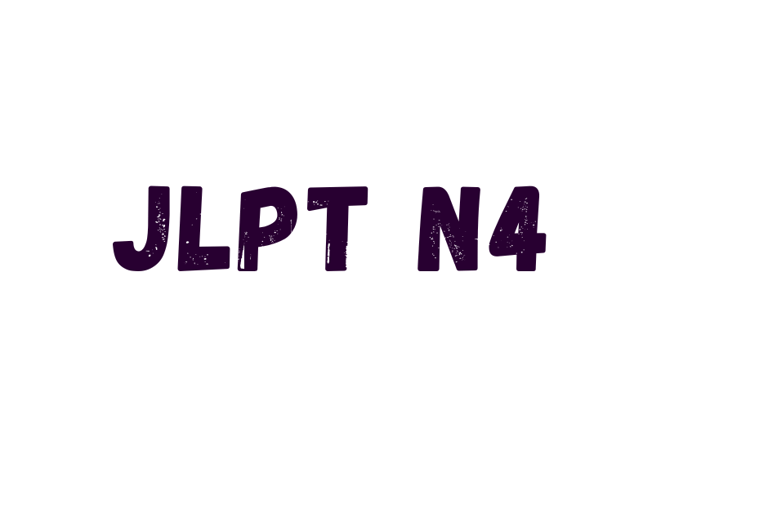

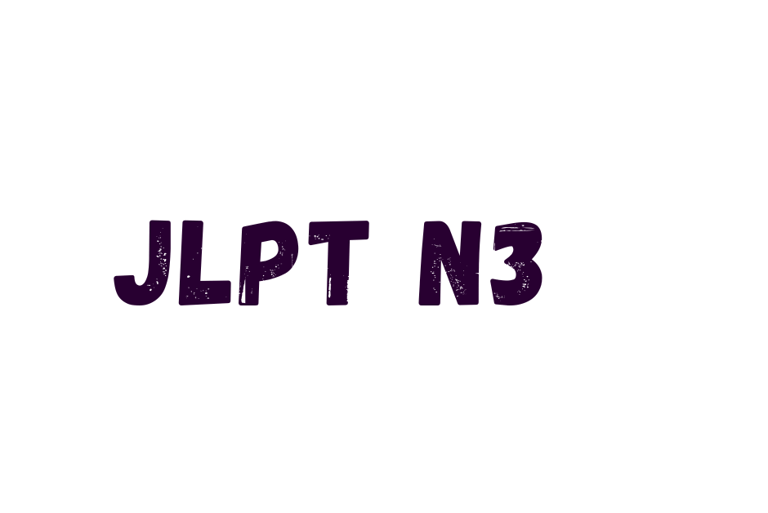

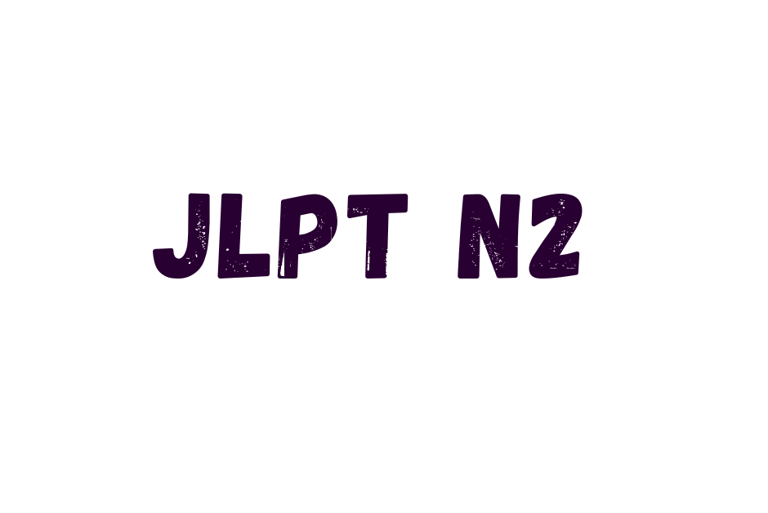

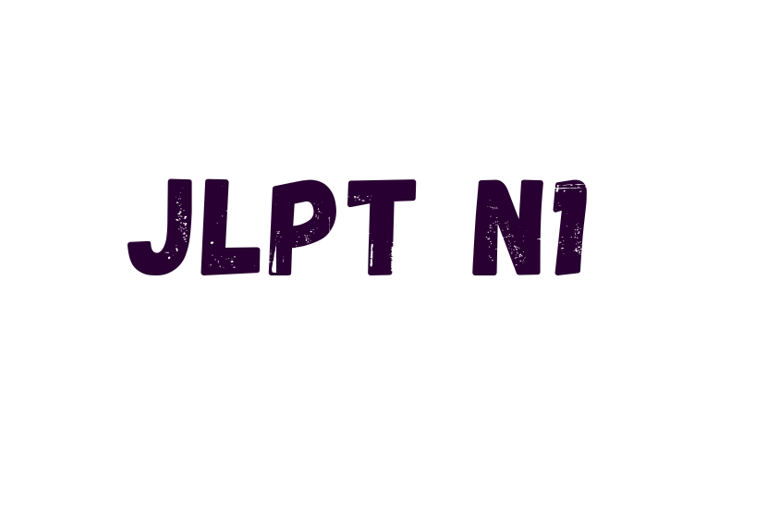

Learning Japanese is like embarking on a cultural odyssey, where each JLPT level (N5 to N1) marks a meaningful milestone on your journey. From mastering Hiragana to unraveling the mysteries of Kanji, every step brings you closer to Japan’s rich traditions, cutting-edge innovations, and unique artistry. With each achievement, you’ll unlock new skills that make exploring everything from manga to tea ceremonies a truly immersive and unforgettable experience.
Why Learn Japanese Through JLPT?
Let’s be real—learning Japanese can feel like navigating a sushi menu blindfolded, while kanji characters quietly judge you from the corner. But fear not—the JLPT is your personal guide through the land of Hiragana, Katakana, and Kanji chaos. 🍱🗾
JLPT (Japanese Language Proficiency Test) is the official way to track your Japanese skills. Think of it as a level-up system—from saying konnichiwa with confidence to chatting about anime plot holes, business meetings, or the subtle beauty of a haiku.
Each level (N5 to N1) unlocks new abilities—like understanding native conversations, reading manga without Google, and impressing your friends with words like otsukaresama. Oh, and if you dream of working or studying in Japan, having a JLPT certificate is basically your golden ticket.




